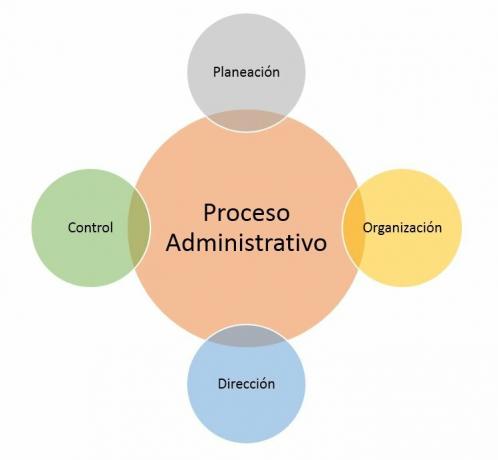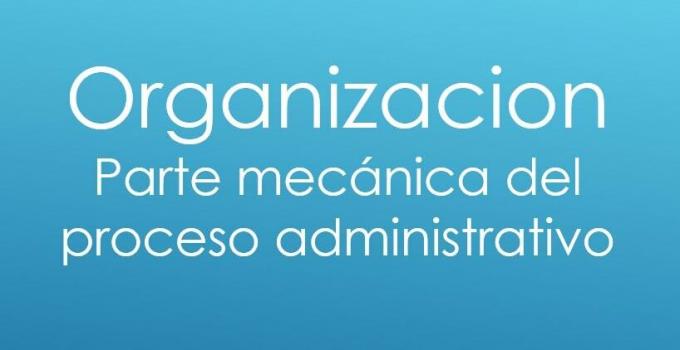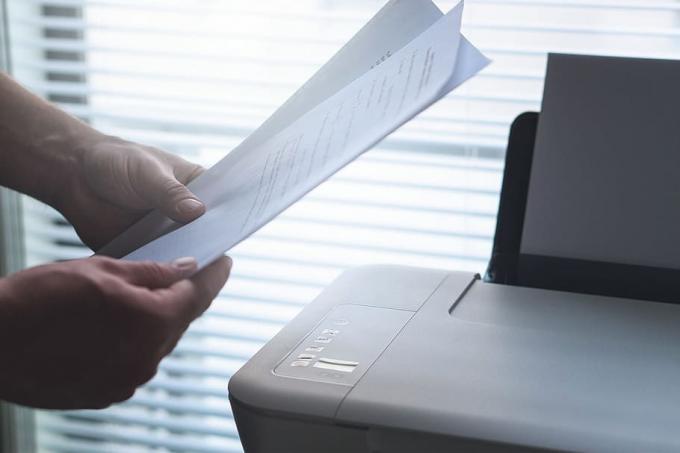Do you know the stages of the administrative process? The Planning, Organization, Direction and Control (P.O.D.C.) of the company's processes are essential to achieve corporate objectives. Review the details of each of these stages in this article.
The administrative process is a connected interaction of the processes of planning, organization, direction Y control, established to achieve the use of human, technical, material and any other resources that the organization has to perform effectively.
This set of activities is governed by certain rules or business policies whose purpose is to reinforce the efficiency in the use of these resources.
Advertisements
It is applied in organizations to achieve their objectives and satisfy their lucrative and social needs. The work of administrators and managers in this regard is important, it is said that their performance is measured according to compliance with the administrative process.
The functions of the administrative process are the same functions of the different stages (planning, organization, direction and control) but they differ from them because they are applied to the general objectives of the organization.
Advertisements
In this article you will find:
Stages of the administrative process
The administrative process is developed in different stages, known by the abbreviations of planning, organization, direction and control (P.O.D.C.)These are consistent and are repeated for each objective determined by the organization or company.
These stages are usually grouped into two phases, which are:
Advertisements
Mechanical phase: Planning What is to be done? Y Organization How should it be done? This establishes what is going to be done and has a structure to do it.
Dynamic phase: Direction How is it being done? Y Control How was it done? How the organism that has been structured previously is managed is specified.
Advertisements
Activities and functions of the administrative process
1.- Planning

It is the first step to take, it consists of knowing in advance what to do, the direction to follow, what you want to achieve, what to do to achieve it, who, when and how you are going to do it.
Advertisements
To do this, some steps are followed such as:
- Internal and environmental investigation (tools such as the Porter's 5 forces and the SWOT analysis).
- Proposal of purposes, strategies and policies and purposes.
- Establishment of actions to be executed in the short, medium and long term.
Scholars of the subject affirm that planning encompasses the definition of organizational goals, the development of an overall strategy to achieve these goals and the achievement of priority plans to coordinate all activities.
Specifically, this function must be exercised by the administrative body of the company, and it will provide the objectives and goals for the company and the methods that it will carry out.
Objectively, a plan is established that contains the future activities to be carried out, to be implemented with prior visualization, taking into account each characteristic in detail.
The most important planning activities are:
- Predefinition of objectives and goals to be achieved during a certain time.
- Implement a strategy with appropriate methods and techniques to carry out.
- Anticipate and plot against possible future problems.
- Clarify, expand and determine the objectives.
- Implement working conditions.
- Select and state the tasks to be carried out to meet the objectives.
- Build a general plan of achievement emphasizing new ways of doing work.
- Establish policies, methods and procedures from performance.
- Modify plans based on the outcome of the control.
2.- Organization

It is the second step to take, it constitutes a set of rules to be respected within the company by all who work there, the main function in this stage is coordination.
After the planning the next step is to distribute and assign the different activities to the work groups that make up the company, allowing the equitable use of resources to create a relationship between staff and work that must run.
Organizing is using the work in search of goals for the company, it includes setting the tasks to be carried out, who is going to do them, where they are make the decisions and to whom they are accountable. That is, the organization allows knowing what must be done to achieve a planned purpose, dividing and coordinating activities and providing the necessary resources.
The work carried out here is related to the aptitudes (physical and intellectual) of each worker at the same time with the resources that the company has.
The main intention of the organization is to detail the objective assigned to each activity so that the minimum is met spending and with a maximum degree of satisfaction.
The most significant activities of the organization are:
- Make the meticulous and detailed selection of each worker for the different positions.
- Subdivide tasks in operating units.
- Choose an administrative authority for each sector.
- Provide materials and resources to each sector.
- Concentrate operational obligations on jobs by department.
- Keep the job requirements clearly established.
- Provide personal facilities and other resources.
- Adjust the organization based on the results of the control.
3.- Address

It is the third step to take, within it the execution of the plans, communication, motivation and supervision necessary to achieve the goals of the company is carried out.
At this stage, the presence of a manager with the ability to make decisions, instruct, help and direct the different work areas is necessary.
Each working group is governed by rules and measures that seek to improve its operation, the direction is traffic to achieve through interpersonal influence that all workers contribute to the achievement of the objectives.
Management can be exercised through:
- The leadership
- The motivation
- The communication.
The most significant activities of the management are:
- Offer motivation to staff.
- Reward employees with salary according to their functions.
- Consider the needs of the worker.
- Maintain good communication between the different labor sectors.
- Allow participation in the decision-making process.
- Influence workers to do their best.
- Train and developing workers to use their full physical and intellectual potential.
- Meeting the different needs of employees by recognizing their effort at work.
- Adjust the efforts of management and execution according to the results of the control.
4.- Control

It is the last step that must be taken, within this the evaluation of the general development of a company, this last stage has the task of guaranteeing that the path that is taken will bring it closer to the success. It is an administrative task that must be carried out with professionalism and transparency.
The control of activities developed in the company offers an analysis of the ups and downs of the same, then based on the results make the different modifications that are feasible to be carried out to correct weaknesses and low points perceived.
The main function of control is to measure the results obtained, compare them with the planned results to seek continuous improvement.
For this reason, this is considered a follow-up effort focused on correcting any deviations that may arise with respect to the objectives set. Then it contrasts what was planned and what was achieved to unleash the corrective actions that keep the system oriented towards the objectives.
The most important control activities are:
- Follow, evaluate and analyze the results obtained.
- Contrast the results against performance standards.
- Compare the results obtained with the established plans.
- Define and initiate corrective actions.
- Discuss effective means to measure operability.
- Communicate and participate to everyone about the means of measurement.
- Transfer detailed information that shows the variations and comparisons made.
- Suggest various corrective actions when necessary.
Importance of the administrative process
The importance of the administrative process it resides in the anticipation of future events and the adequate control of resources in an orderly manner.
It is necessary that the rules, policies and activities of each process are applied effectively and in in line with the objectives and goals of the company, in order to maintain the efficiency of the system and therefore the cost effectiveness and economic benefit.
FAQ - Frequently asked questions about the topic
What are the stages of the administrative process?
The stages of the administrative process are: Planning, Organization, Direction and Control.
What are the 5 steps of the administrative process?
- Step # 1: Planning the activities
- Step # 2: Organization of company resources
- Step # 3: Implementation of the process
- Step # 4: Measure the results and analyze the process
- Step # 5: process improvement
What is the importance of the administrative process?
The administrative process is important from the operational point of view in the company, considering that each process that is executed has to go through this analysis to be executed in a optimal.
We invite you to review these interesting content:
- Examples of the administrative process
- Human resources management


